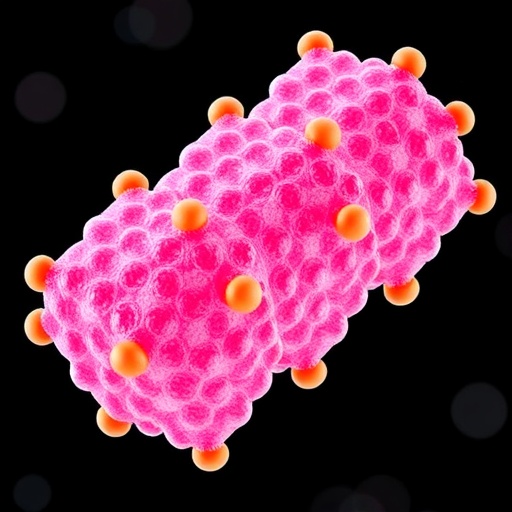Recent advancements in materials science have propelled the exploration of supercapacitors, devices that bridge the gap between capacitors and batteries. Among various materials studied for supercapacitor applications, nanostructured bixbyite Gd₂O₃ has garnered significant attention due to its unique electrical properties. The synthesis of bixbyite Gd₂O₃, a rare earth oxide, varies significantly based on the methodology employed, influencing not only the physical characteristics of the material but also its performance in supercapacitor applications.
The recent comparative study conducted by Balaji et al. examines diverse synthesis methods to produce nanostructured bixbyite Gd₂O₃, alongside detailed performance metrics for each variant. These methods encompass sol-gel, hydrothermal, and microwave-assisted synthesis techniques. Each approach comes with distinct advantages and limitations, influencing growth rate, material morphology, and ultimately the electrochemical performance of the resultant Gd₂O₃ configurations.
Understanding the properties of Gd₂O₃ is crucial. It possesses a cubic bixbyite crystal structure, which is instrumental in enhancing ionic conductivity. The unique arrangement of oxide ions within the crystal lattice allows for rapid ion transport – a vital property for energy storage applications. The study highlights how manipulation of Gd₂O₃ at the nanoscale can optimize its electrochemical properties, leading to superior energy and power density metrics, critical for supercapacitor efficiency.
In their investigation, Balaji et al. found that the synthesis technique directly impacts the grain size, surface area, and porosity of the Gd₂O₃ nanostructures. For instance, the sol-gel method typically yields smaller particle sizes and higher surface areas compared to traditional solid-state methods. This increase in surface area directly correlates with improved charge storage capabilities, establishing a clear connection between synthesis method and supercapacitor performance.
Hydrothermal synthesis, on the other hand, contributes to the formation of more crystalline structures, which enhances electrical conductivity. The researchers meticulously measured the electrolyte interactions with the synthesized bixbyite structures to determine the capacitance behavior, revealing that materials synthesized via hydrothermal methods displayed improved electrochemical stability and cycling performance.
Microwave-assisted synthesis emerged as a novel contender in the study, showing remarkable speed and efficiency in producing nanostructured materials. This approach drastically reduces processing times while maintaining the quality and characteristics essential for high-performance applications. The quick synthesis cycle helps align the material’s characteristics closer to commercial viability, addressing a major barrier in the scalability of advanced supercapacitor materials.
There is a crucial distinction between energy density and power density. Energy density refers to the amount of energy stored in the supercapacitor per unit volume, while power density relates to how quickly energy can be delivered. Balaji et al. effectively measured these two metrics across the synthesized Gd₂O₃ samples, revealing that the material’s architecture can be fine-tuned for specific applications depending on whether high energy or high power is desired.
The electrochemical tests performed by the researchers included cyclic voltammetry and galvanostatic charge-discharge analysis. These assessments provided insights into the capacitance and charge retention abilities of each synthesized Gd₂O₃ variant. The findings indicated that nanostructured materials exhibited distinct electrochemical behaviors, allowing for tailored applications in electronic devices where rapid charge and discharge cycles are paramount.
In shaping the future of energy storage technologies, the implications of this study extend beyond the laboratory. With increasing demand for efficient energy storage systems in a world leaning toward renewable energy, the development of advanced materials like bixbyite Gd₂O₃ is critical. This study provides a pathway to not only optimize existing materials but also inspires the exploration of hybrid systems that combine the strengths of supercapacitors and batteries.
Moreover, the research opens new doors for integrating nanostructured bixbyite Gd₂O₃ into composite materials that could enhance the performance of supercapacitors while reducing costs. The exploration of sustainable production methods could further align with global efforts to minimize environmental impact, illustrating how science is evolving to meet societal needs.
In conclusion, the comparative study of nanostructured bixbyite Gd₂O₃ synthesized through different methods provides valuable insights for the field of energy storage. As researchers continue to refine and develop advanced materials, the potential for revolutionary changes in supercapacitor technology appears promising. Ultimately, innovations in this space will likely play a significant role in shaping the future landscape of energy consumption and storage.
With ongoing advancements in synthesis techniques and materials engineering, the unique properties of bixbyite Gd₂O₃ are set to revolutionize the way we think about energy storage solutions. Researchers like Balaji et al. are paving the way for a future where energy systems are more efficient, sustainable, and capable of meeting the demands of modern technology.
Through the lens of this research, we can anticipate that supercapacitor applications will dramatically expand, harnessing the capabilities of innovative materials like nanostructured bixbyite Gd₂O₃ to create systems that can significantly boost energy efficiency in electronics, electric vehicles, and renewable energy systems.
As we continue to investigate the boundaries of material science, the journey through nanostructured materials illuminates a path forward, promising breakthroughs that not only enhance technological capabilities but also advance sustainable solutions for energy storage in a rapidly changing world.
In time, this will lead to the integration of these advanced materials into commercially viable products that can hold not only environmental promise but also the potential to significantly enhance performance and reliability in our everyday devices.
Subject of Research: Nanostructured Bixbyite Gd₂O₃ for Supercapacitor Applications
Article Title: Comparative study of nanostructured bixbyite Gd₂O₃ synthesized by different methods for high-performance supercapacitor applications
Article References: Balaji, V., Karan, R.R.S., Eswari, K.M. et al. Comparative study of nanostructured bixbyite Gd2O3 synthesized by different methods for high-performance supercapacitor applications. Ionics (2025). https://doi.org/10.1007/s11581-025-06552-2
Image Credits: AI Generated
DOI: https://doi.org/10.1007/s11581-025-06552-2
Keywords: Supercapacitors, Bixbyite Gd₂O₃, Nanostructured Materials, Energy Storage, Synthesis Methods, Electrochemical Properties, Materials Science.




